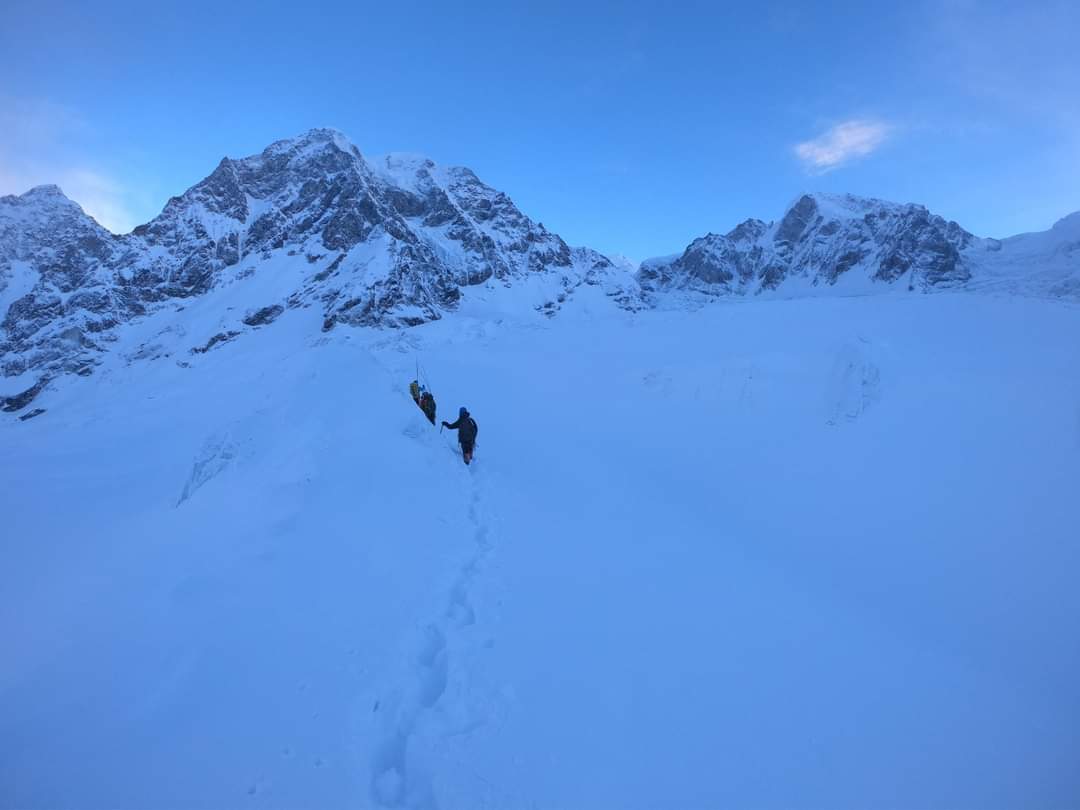Gyalchen Peak Trek (6,151 meters )










Gyalchen Peak Trek: A Hidden Gem for Adventure Seekers
Nestled in the majestic Langtang region of Nepal, Gyalchen Peak is an underrated yet captivating destination for mountaineers and trekkers alike. Standing tall at 6,151 meters, this peak offers a perfect blend of cultural immersion, wilderness exploration, and high-altitude adventure. Whether you are an experienced climber or a trekking enthusiast with a hunger for something extraordinary, Gyalchen Peak promises an unforgettable experience.
Why Gyalchen Peak?
The allure of Gyalchen Peak lies in its unspoiled trails and the sense of discovery that accompanies every step. Unlike more crowded peaks in Nepal, Gyalchen provides a tranquil escape into nature, making it ideal for those who seek solitude and adventure. The region’s varied landscape—comprising lush forests, alpine meadows, and snow-covered ridges—sets the perfect backdrop for an exhilarating journey.
The Langtang Region: A Gateway to Serenity
The trek to Gyalchen Peak traverses through the heart of the Langtang Valley, one of the most scenic and culturally rich regions of Nepal. The Langtang region is renowned for its biodiversity, home to rare wildlife such as the red panda, Himalayan tahr, and the elusive snow leopard. As you pass through charming Tamang villages, you’ll witness a unique blend of Tibetan culture and local traditions, offering an enriching cultural experience.
Thrilling High-Altitude Adventure
Climbing Gyalchen Peak is both thrilling and challenging. While it may not require extensive technical climbing skills, a good level of fitness and previous trekking experience are recommended. The trek includes glacier crossings, snow fields, and steep ridges, making it a perfect training ground for future mountaineering expeditions.
Gyalchen’s location offers a mesmerizing panoramic view of neighboring peaks, including Langtang Lirung, Ganesh Himal, and Dorje Lakpa. The summit rewards adventurers with a breathtaking 360-degree vista of the Himalayan range, leaving trekkers in awe of the natural grandeur surrounding them.
Key Highlights of Gyalchen Peak Trek
Stunning Landscape: From the dense rhododendron forests to rugged alpine terrains, the trek to Gyalchen Peak showcases the diverse beauty of the Himalayas.
Rich Cultural Experience: Engage with the local Tamang and Sherpa communities, experience their hospitality, and gain insights into their traditional way of life.
Breathtaking Views: Capture uninterrupted views of the Langtang, Ganesh Himal, and Jugal ranges from various vantage points along the trail.
Off-the-Beaten-Path: Gyalchen Peak offers a less-traveled route, ensuring you have a peaceful and intimate experience with nature.
Wildlife Encounters: The region is a sanctuary for diverse wildlife, providing opportunities for sighting rare species.
Best Time to Trek Gyalchen Peak
The best time to embark on the Gyalchen Peak Trek is during the spring (March to May) and autumn (September to November) seasons. During these periods, the weather is stable, visibility is at its best, and the temperatures are moderate, making it ideal for trekking and peak climbing. The vibrant rhododendron blooms in spring add color to the trails, while autumn offers crystal-clear skies and stunning mountain vistas.
Essential Trekking Information
Trek Grade: Moderate to challenging
Elevation: 6,151 meters (Gyalchen Peak)
Accommodation: Teahouses and tented camps
Permits: Langtang National Park Entry Permit and TIMS (Trekkers' Information Management System) card are required.
Guide & Support: It is highly recommended to hire a licensed guide and porters to ensure safety and ease throughout the trek.
Why Choose Gyalchen Peak for Your Next Adventure?
If you're looking to escape the more commercial trekking routes in Nepal and explore a peak that offers a mix of cultural, natural, and adventurous experiences, Gyalchen Peak is the perfect destination. The trek is suitable for those seeking a less-crowded, yet equally rewarding, Himalayan adventure. Gyalchen Peak’s serene environment, combined with the thrill of conquering a high-altitude peak, makes it an exceptional journey for true adventurers.
Fixed Departure Dates
| Trip Date | Seats Remaining | |
|---|---|---|
| October 1 - October 16 | 10 Seats Left | Book Now |
Itinerary
Arrival in Kathmandu
Arrive in Kathmandu.
Transfer to the hotel.
Trek briefing and preparation.
Overnight in Kathmandu.
Kathmandu to Kyansing (by drive)
Early morning drive from Kathmandu to Kyansing (about 6-7 hours).
Enjoy scenic views of rivers and villages along the way.
Overnight in Kyansing.
Kyansing to Dippu Village (Trek)
Begin the trek from Kyansing to Dippu Village (5-6 hours).
Pass through dense forests and local villages.
Overnight in Dippu Village.
Dippu Village to Ne-Pemasal
Trek from Dippu Village to Ne-Pemasal (5-6 hours).
Trek through beautiful landscapes, including alpine meadows and rhododendron forests.
Overnight in Ne-Pemasal.
Ne-Pemasal (Acclimatization Day)
Acclimatization day to adjust to the altitude.
Explore nearby areas or take short hikes to higher elevations.
Overnight in Ne-Pemasal.
Ne-Pemasal to Gyapkharka
Trek from Ne-Pemasal to Gyapkharka (4-5 hours).
Experience gradual altitude gain, offering stunning mountain views.
Overnight in Gyapkharka.
Gyapkharka to Yang Kharka
Trek from Gyapkharka to Yang Kharka (4-5 hours).
Pass through high-altitude terrain and enjoy panoramic views of the Himalayas.
Overnight in Yang Kharka.
Summit Gyalzen Peak and return to Yang Kharka
Early morning climb to the summit of Gyalzen Peak (6-7 hours ascent and descent).
Enjoy breathtaking views from the summit.
Return to Yang Kharka for the night.
Yang Kharka to Dippu Village
Retrace your steps from Yang Kharka back to Dippu Village (5-6 hours).
Overnight in Dippu Village.
Dippu Village to Kyansing
Trek from Dippu Village back to Kyansing (4-5 hours).
Overnight in Kyansing.
Kyansing to Kathmandu (Drive)
Drive back from Kyansing to Kathmandu (6-7 hours).
Farewell dinner and overnight in Kathmandu.
Departure from Kathmandu
Departure or continue exploring Kathmandu and surrounding areas.

